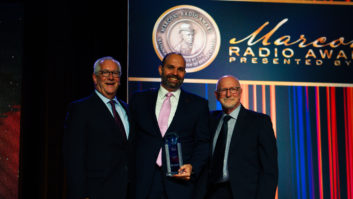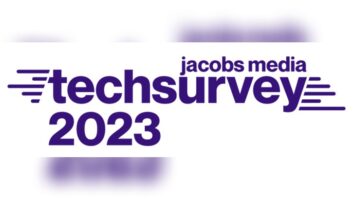According to Detroit-based media research and consulting firm Jacobs Media’s new study of core radio listeners, digital media’s impact continues to increase, providing both opportunity and challenges to traditional radio broadcasters.
These conclusions were drawn from Techsurvey10 responses, gathered online from Jan. 14–20, representing 37,063 respondents provided by 199 participating U.S. and Canadian broadcast stations.
The media habits of 11 different format core audiences, along with five generations, are examined in this listener survey.
“We learned a lot about how digital’s growth is changing media habits, but by studying the movement of younger listeners — Generations Y and Z — we gain an even greater understanding of where the puck is headed,” said Jacobs Media President Fred Jacobs.
TS10 now shows that three-fourths own a smartphone, while 51% carry a tablet. Weekly streaming has become typical for 55% of respondents.
While 95% still tune in to radio daily, fewer respondents listen for a minimum of an hour daily. But compared to a year ago, only 9% say they’re listening to less radio, while 9 in 10 who say they’re listening to the same amount or more of radio.
Many respondents now access station content digitally; 17% of all broadcast radio consumption is occurring via computer and mobile streams, as well as on other sources.
Pandora was the most popular of the pure-plays by a wide margin, but criticisms continue, focused on its commercials. Gen Y and Z consumers are the top generations for Pandora listening; they are also the most critical.
Now nearly one-fifth (19%) of respondents say the vehicle in which they ride in most often sports a system like Audi Connect or Ford SYNC. Similar to last year, half (50%) say the lion’s share of their radio listening takes place in cars, especially progressively younger consumers.
Of those with a social profile, 95% are on Facebook, and 73% of these respondents visit the site at least daily. However, Generation Z indicates their Facebook engagement is being replaced by Twitter, Instagram and Snapchat.
Nearly as many consumers are roused every day by their phones as clock radios. A majority of Boomers still get out of the bed to buzzers or radio that emanate from clock radios, while at least six in 10 Millennials (67%) and Gen Z (60%) participants use their phones to wake up.
In this study, the percentage of those who frequently share online content has doubled — 34% say they do so, creating opportunities for stations and personalities. Women and Millennials are most apt to be “serial sharers.” Three in 10 respondents, skewing to women and members of both Generations Y and Z, also indicate they listen more to stations that interact with them.
Radio has an opportunity to collect usage data, as more than seven of 10 of those who say they’d be willing to provide basic information in exchange for accessing station streams.
A majority (51%) of those interested in new music designate radio as their go-to, but Gen Z respondents are also choosing You Tube and Pandora for this. However, broadcast radio leads in the areas of artist access and listener trust for music consumption.
Jacobs suggests several conclusions based on these results.
Broadcasters must look beyond the dial because of its digital competitors. This makes mobile engagement, a competitive stream and good social media strategy crucial, as “social acknowledgment” is key for fan acknowledgment.
However, radio does have a measurement problem; a method must be devised so that ratings account for all of the ways consumers access radio content, the report said.
Cars continue to factor large in radio’s future, especially as more vehicles become “connected” and radio’s competition increases.
Radio is still key for new music discovery and artist exposure and promotion, but it must address the challenges and opportunities presented by young consumers, whose media habits run counter to traditional behavior.












